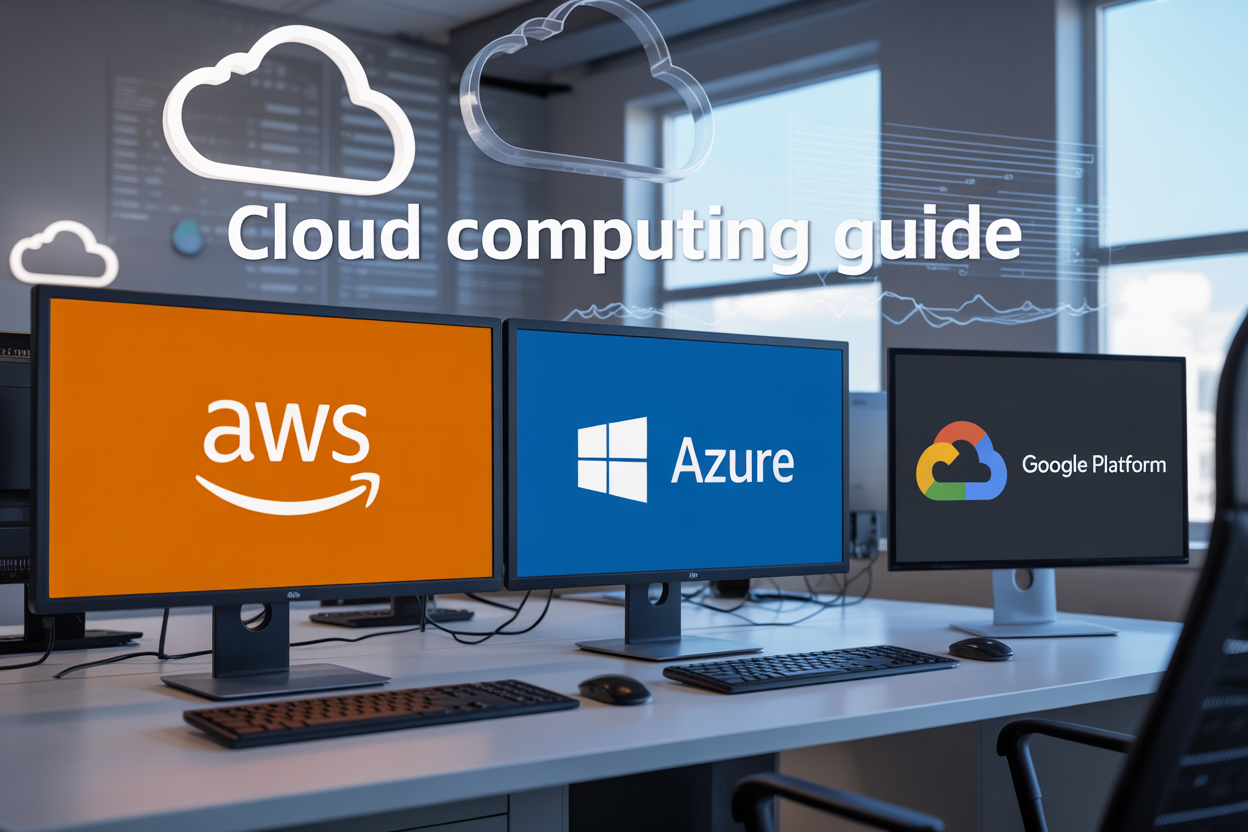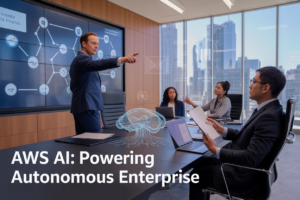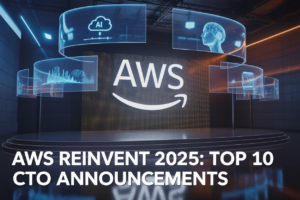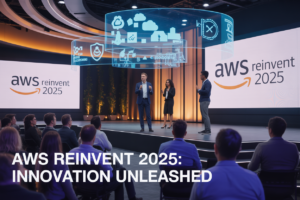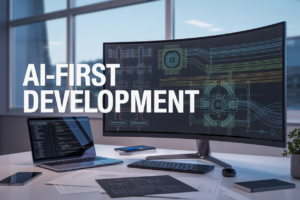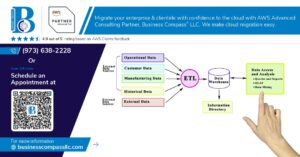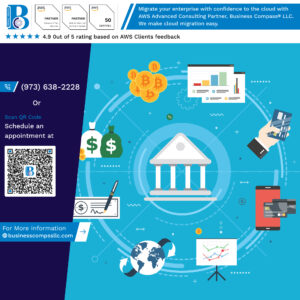Are you overwhelmed by the myriad of cloud service providers available today? 🤔 With tech giants like Amazon, Microsoft, and Google all vying for your attention, choosing the right cloud platform can feel like navigating a labyrinth. But fear not! We’re here to shed light on the Big Three of cloud computing: AWS, Azure, and GCP.
In today’s digital landscape, cloud services are no longer a luxury—they’re a necessity. Whether you’re a startup looking to scale rapidly or an enterprise seeking to optimize operations, understanding the strengths and weaknesses of each platform is crucial. But with each provider offering a dizzying array of services, from compute and storage to AI and IoT, how do you decide which one fits your needs best? 💡
In this comprehensive comparison, we’ll dive deep into the world of AWS, Azure, and GCP. We’ll explore everything from their core computing services to their cutting-edge AI offerings, helping you make an informed decision for your business. So buckle up as we embark on this cloud-hopping journey, starting with an overview of these tech titans and then delving into specific services like compute, storage, and database solutions.
Overview of Cloud Service Providers
A. Brief history of AWS, Azure, and GCP
Amazon Web Services (AWS) pioneered cloud computing, launching in 2006 with S3 storage and EC2 compute services. Microsoft Azure followed in 2010, leveraging its enterprise relationships. Google Cloud Platform (GCP) entered the market in 2011, building on its data center expertise.
B. Market share and global presence
| Provider | Market Share | Global Presence |
|---|---|---|
| AWS | ~33% | 26 regions |
| Azure | ~22% | 60+ regions |
| GCP | ~10% | 24 regions |
AWS leads in market share, but Azure is growing rapidly. GCP, while smaller, is gaining traction, especially in AI and ML workloads.
C. Key differentiators
- AWS: Broadest service portfolio, extensive partner network
- Azure: Strong enterprise integration, hybrid cloud solutions
- GCP: Advanced analytics, AI/ML capabilities, competitive pricing
Each provider offers unique strengths:
- AWS excels in scalability and flexibility
- Azure provides seamless Microsoft ecosystem integration
- GCP stands out for data analytics and open-source support
As we delve deeper into specific services, you’ll see how these differentiators play out across various cloud computing domains.
Compute Services Comparison
Virtual machines and containers
When comparing compute services across AWS, Azure, and GCP, virtual machines (VMs) and containers are fundamental offerings. Each cloud provider has its own suite of VM and container services, catering to different workloads and requirements.
| Provider | VM Service | Container Service |
|---|---|---|
| AWS | EC2 | ECS, EKS |
| Azure | Azure VMs | AKS, ACI |
| GCP | Compute Engine | GKE, Cloud Run |
AWS offers Amazon EC2 for VMs and Amazon ECS/EKS for container orchestration. Azure provides Azure VMs and Azure Kubernetes Service (AKS) for similar purposes. GCP’s Compute Engine handles VMs, while Google Kubernetes Engine (GKE) manages containers.
Key differences include:
- Instance types and sizes
- Pricing models
- Integration with other cloud services
- Management and monitoring tools
Serverless computing options
Serverless computing has gained popularity for its ease of use and cost-effectiveness. Each cloud provider offers robust serverless platforms:
- AWS: AWS Lambda
- Azure: Azure Functions
- GCP: Cloud Functions
These services allow developers to run code without provisioning or managing servers. They differ in supported languages, execution times, and integration capabilities with other cloud services.
Auto-scaling capabilities
Auto-scaling is crucial for maintaining application performance and optimizing costs. All three providers offer auto-scaling features for both VMs and containers:
- AWS: Auto Scaling groups for EC2, Fargate for ECS/EKS
- Azure: VM Scale Sets, AKS cluster autoscaler
- GCP: Managed Instance Groups, GKE cluster autoscaler
These services automatically adjust resource allocation based on predefined metrics or custom rules, ensuring optimal performance during peak loads and cost savings during low-demand periods.
Performance benchmarks
Performance can vary depending on workload types and configurations. Generally, benchmarks show comparable performance across providers for similar instance types. However, specific use cases may favor one provider over others. It’s essential to conduct thorough testing for your specific applications to determine the best fit.
Storage Solutions
A. Object storage offerings
When it comes to object storage, AWS, Azure, and GCP each offer robust solutions. Let’s compare their offerings:
| Provider | Service Name | Key Features |
|---|---|---|
| AWS | Amazon S3 | Versioning, lifecycle management, cross-region replication |
| Azure | Azure Blob Storage | Hot, cool, and archive tiers, data lake storage |
| GCP | Google Cloud Storage | Multi-regional, regional, nearline, and coldline storage classes |
All three providers offer:
- Scalability to petabytes of data
- High durability and availability
- REST API access
- Integration with other cloud services
B. Block storage options
Block storage is essential for applications requiring low-latency access to data. Here’s how the major cloud providers compare:
- AWS Elastic Block Store (EBS): Offers SSD and HDD options, snapshots, and encryption
- Azure Managed Disks: Provides ultra disks, premium SSDs, standard SSDs, and standard HDDs
- Google Persistent Disks: Features standard, balanced, and SSD persistent disks
C. File storage services
For applications requiring shared file systems, cloud providers offer the following solutions:
- AWS Elastic File System (EFS)
- Azure Files
- Google Cloud Filestore
These services provide scalable, fully managed file storage that can be accessed by multiple compute instances simultaneously.
D. Data archiving and backup
Each cloud provider offers specialized services for long-term data retention and backup:
- AWS: Glacier for archiving, Backup for automated backups
- Azure: Archive storage tier, Backup service
- GCP: Archive storage class, Backup for GKE
Now that we’ve covered storage solutions, let’s explore how these cloud giants handle database services in the next section.
Database Services
Relational database options
When it comes to relational database options, AWS, Azure, and GCP each offer robust solutions:
| Provider | Primary Relational Database Service |
|---|---|
| AWS | Amazon RDS |
| Azure | Azure SQL Database |
| GCP | Cloud SQL |
These services support popular database engines like MySQL, PostgreSQL, and SQL Server. AWS RDS also offers Amazon Aurora, a highly scalable MySQL and PostgreSQL-compatible database. Azure provides Azure Database for MySQL and PostgreSQL, while GCP offers Cloud Spanner for global distribution.
NoSQL database solutions
For NoSQL databases, each cloud provider has multiple offerings:
- AWS: DynamoDB (key-value and document), Amazon DocumentDB (MongoDB-compatible)
- Azure: Cosmos DB (multi-model), Table Storage (key-value)
- GCP: Cloud Bigtable (wide-column), Cloud Firestore (document)
Data warehousing capabilities
Data warehousing is crucial for big data analytics:
- AWS: Amazon Redshift
- Azure: Azure Synapse Analytics
- GCP: BigQuery
These services offer petabyte-scale data warehousing with columnar storage and massively parallel processing capabilities.
Database migration tools
To facilitate seamless transitions, each provider offers migration tools:
- AWS: Database Migration Service (DMS)
- Azure: Azure Database Migration Service
- GCP: Database Migration Service
These tools support both homogeneous and heterogeneous migrations, enabling businesses to move their databases to the cloud with minimal downtime. With these comprehensive database services, organizations can choose the best fit for their specific needs across relational, NoSQL, and data warehousing requirements.
Networking and Content Delivery
Virtual private cloud features
When it comes to networking in the cloud, virtual private clouds (VPCs) are essential for creating isolated network environments. Here’s a comparison of VPC features across AWS, Azure, and GCP:
| Feature | AWS | Azure | GCP |
|---|---|---|---|
| Network isolation | VPC | Virtual Network | VPC |
| Subnets | Yes | Yes | Yes |
| Private IP addressing | Yes | Yes | Yes |
| Network ACLs | Yes | Network Security Groups | Firewall Rules |
| VPN connectivity | AWS VPN | Azure VPN Gateway | Cloud VPN |
| Peering | VPC Peering | VNet Peering | VPC Network Peering |
All three providers offer robust VPC solutions, allowing users to create secure and isolated network environments for their cloud resources.
Load balancing services
Load balancing is crucial for distributing traffic across multiple instances to ensure high availability and performance. Each cloud provider offers various load balancing options:
-
AWS: Elastic Load Balancing (ELB)
- Application Load Balancer (ALB)
- Network Load Balancer (NLB)
- Classic Load Balancer (CLB)
-
Azure: Azure Load Balancer
- Basic
- Standard
-
GCP: Cloud Load Balancing
- HTTP(S) Load Balancing
- TCP/SSL Load Balancing
- Network Load Balancing
Content delivery networks (CDN)
CDNs play a vital role in delivering content to users with low latency. Here’s a brief overview of CDN services:
- AWS CloudFront
- Azure Content Delivery Network
- Google Cloud CDN
These CDN services cache content at edge locations worldwide, reducing latency and improving user experience.
DNS management
DNS management is essential for routing traffic to the correct resources. Each provider offers DNS services:
- AWS Route 53
- Azure DNS
- Google Cloud DNS
These services provide scalable and reliable DNS management, supporting various record types and routing policies.
Now that we’ve covered networking and content delivery aspects, let’s explore the security and identity management features offered by these cloud providers.
Security and Identity Management
Identity and Access Management (IAM)
Cloud service providers offer robust IAM solutions to manage user access and permissions. Here’s a comparison of IAM features across AWS, Azure, and GCP:
| Feature | AWS | Azure | GCP |
|---|---|---|---|
| User Management | IAM Users | Azure AD Users | Cloud Identity |
| Role-based Access | IAM Roles | Azure AD Roles | IAM Roles |
| Multi-factor Authentication | AWS MFA | Azure MFA | Google 2-Step Verification |
| Single Sign-On | AWS SSO | Azure AD SSO | Cloud Identity SSO |
Each provider offers granular control over user permissions, allowing organizations to implement the principle of least privilege effectively.
Encryption and Key Management
Encryption is crucial for data protection in the cloud. The three major providers offer comprehensive encryption services:
- AWS: Key Management Service (KMS) and CloudHSM
- Azure: Key Vault and Azure Dedicated HSM
- GCP: Cloud Key Management Service and Cloud HSM
These services enable customers to manage encryption keys, rotate them regularly, and integrate with other cloud services for seamless data protection.
Compliance Certifications
Cloud providers maintain various compliance certifications to meet industry standards:
- Common certifications across all three:
- ISO 27001
- SOC 1, 2, and 3
- PCI DSS
- HIPAA
Each provider also offers region-specific compliance certifications to meet local regulatory requirements.
Security Monitoring and Threat Detection
Advanced security monitoring and threat detection capabilities are essential for maintaining a secure cloud environment:
- AWS: GuardDuty, Security Hub, and CloudTrail
- Azure: Security Center, Sentinel, and Azure Monitor
- GCP: Security Command Center, Cloud Armor, and Cloud Audit Logs
These tools provide real-time threat intelligence, anomaly detection, and comprehensive logging for security analysis and incident response.
Now that we’ve covered the security and identity management aspects, let’s explore the AI and Machine Learning services offered by these cloud providers.
AI and Machine Learning Services
Pre-built AI models and APIs
AWS, Azure, and GCP offer a range of pre-built AI models and APIs to accelerate AI development. Here’s a comparison of their offerings:
| Feature | AWS | Azure | GCP |
|---|---|---|---|
| Vision AI | Amazon Rekognition | Azure Computer Vision | Cloud Vision AI |
| Speech-to-Text | Amazon Transcribe | Azure Speech to Text | Cloud Speech-to-Text |
| Natural Language Processing | Amazon Comprehend | Azure Text Analytics | Cloud Natural Language |
| Chatbots | Amazon Lex | Azure Bot Service | Dialogflow |
These services enable developers to quickly integrate AI capabilities into their applications without extensive machine learning expertise.
Machine learning platforms
Each cloud provider offers comprehensive machine learning platforms:
- AWS: Amazon SageMaker
- Azure: Azure Machine Learning
- GCP: Cloud AI Platform
These platforms provide tools for:
- Data preparation and preprocessing
- Model training and evaluation
- Model deployment and management
- AutoML capabilities for automated model selection and hyperparameter tuning
Data analytics tools
To support AI and ML workflows, cloud providers offer robust data analytics tools:
- AWS: Amazon EMR, Amazon Athena, Amazon QuickSight
- Azure: Azure Synapse Analytics, Azure Data Lake Analytics, Power BI
- GCP: BigQuery, Cloud Dataflow, Data Studio
These tools enable organizations to process and analyze large datasets, extract insights, and feed data into machine learning models.
Now that we’ve explored the AI and Machine Learning services offered by major cloud providers, let’s examine how they approach IoT and Edge Computing in the next section.
IoT and Edge Computing
IoT device management
Cloud providers offer robust IoT device management solutions to help businesses efficiently handle their connected devices. Here’s a comparison of the IoT device management capabilities across AWS, Azure, and GCP:
| Feature | AWS IoT Core | Azure IoT Hub | Google Cloud IoT Core |
|---|---|---|---|
| Device provisioning | ✓ | ✓ | ✓ |
| Device authentication | ✓ | ✓ | ✓ |
| Device monitoring | ✓ | ✓ | ✓ |
| OTA updates | ✓ | ✓ | ✓ |
| Device shadows | ✓ | ✓ (Device twins) | ✓ (Device state) |
AWS IoT Core provides a comprehensive suite of tools for device management, including device provisioning, authentication, and monitoring. Azure IoT Hub offers similar capabilities with its device twins feature, allowing for easy synchronization of device state. Google Cloud IoT Core provides a lightweight yet powerful solution for managing IoT devices at scale.
Edge computing capabilities
Edge computing is crucial for processing data closer to the source, reducing latency and bandwidth usage. Each cloud provider offers unique edge computing solutions:
- AWS: AWS Greengrass
- Azure: Azure IoT Edge
- GCP: Cloud IoT Edge
These solutions enable running cloud workloads on edge devices, facilitating local data processing and decision-making. They also support seamless integration with their respective cloud platforms for advanced analytics and storage.
Real-time data processing
Real-time data processing is essential for IoT applications. Cloud providers offer various services to handle high-velocity data streams:
-
AWS:
- Amazon Kinesis
- AWS IoT Analytics
-
Azure:
- Azure Stream Analytics
- Azure Time Series Insights
-
GCP:
- Cloud Dataflow
- Cloud Pub/Sub
These services enable businesses to process and analyze IoT data in real-time, providing valuable insights and enabling quick decision-making. As we move forward, we’ll explore the pricing models and cost management strategies for these cloud providers, helping you make an informed decision for your IoT and edge computing needs.
Pricing Models and Cost Management
Pay-as-you-go options
Cloud service providers offer flexible pay-as-you-go pricing models, allowing businesses to scale resources based on demand. Here’s a comparison of the pay-as-you-go options for AWS, Azure, and GCP:
| Provider | Billing Increment | Minimum Charge | Billing Cycle |
|---|---|---|---|
| AWS | Per second | 1 minute | Monthly |
| Azure | Per second | 1 minute | Monthly |
| GCP | Per second | 1 minute | Monthly |
All three providers offer similar flexibility, but there are subtle differences in their billing models and available discounts.
Reserved instances and savings plans
For cost-effective long-term commitments, cloud providers offer reserved instances and savings plans:
- AWS: Reserved Instances (RIs) and Savings Plans
- Azure: Reserved Virtual Machine Instances
- GCP: Committed Use Discounts
These options can provide significant savings compared to on-demand pricing, often ranging from 20% to 72% depending on the term length and payment option chosen.
Free tier offerings
Each provider offers a free tier to allow users to explore services:
- AWS: 12-month free tier with limited usage of popular services
- Azure: 12-month free services plus always-free options
- GCP: $300 credit for 90 days and always-free tier for certain services
Cost optimization tools
To help manage and optimize cloud spending, providers offer various tools:
- AWS Cost Explorer
- Azure Cost Management
- Google Cloud Cost Management
These tools provide insights into spending patterns, help identify cost-saving opportunities, and offer recommendations for optimizing resource allocation. Using these tools effectively can lead to substantial cost reductions in cloud infrastructure management.
Developer Tools and DevOps
Continuous integration and deployment
AWS, Azure, and GCP offer robust CI/CD solutions to streamline software development workflows. Here’s a comparison of their key offerings:
| Provider | CI/CD Service | Key Features |
|---|---|---|
| AWS | CodePipeline | Automated release pipelines, integration with AWS services |
| Azure | Azure DevOps | End-to-end DevOps toolchain, extensive marketplace |
| GCP | Cloud Build | Fast builds, integration with GCP services |
Each platform provides unique advantages for continuous integration and deployment:
- AWS CodePipeline offers seamless integration with other AWS services, making it ideal for organizations heavily invested in the AWS ecosystem.
- Azure DevOps provides a comprehensive suite of tools, including source control, project management, and testing capabilities.
- GCP Cloud Build excels in speed and flexibility, allowing developers to build, test, and deploy across multiple environments quickly.
Monitoring and logging services
Effective monitoring and logging are crucial for maintaining healthy cloud applications. All three providers offer powerful tools:
- AWS CloudWatch
- Azure Monitor
- Google Cloud’s Operations Suite (formerly Stackdriver)
These services provide real-time insights into application performance, resource utilization, and potential issues. They also offer customizable dashboards and alerting mechanisms to help DevOps teams respond quickly to incidents.
API management
API management is essential for organizations looking to expose their services securely. Each cloud provider offers dedicated API management solutions:
- AWS API Gateway
- Azure API Management
- Google Cloud API Gateway
These services help in creating, publishing, maintaining, and securing APIs at scale. They also provide features like rate limiting, authentication, and analytics to ensure optimal API performance and security.
Containerization and orchestration
Container technologies have revolutionized application deployment and management. AWS, Azure, and GCP all support containerization and offer managed Kubernetes services:
- Amazon Elastic Kubernetes Service (EKS)
- Azure Kubernetes Service (AKS)
- Google Kubernetes Engine (GKE)
These services simplify the deployment, management, and scaling of containerized applications. Additionally, each provider offers container registry services for storing and managing container images securely.
AWS, Azure, and GCP offer a comprehensive suite of cloud services, each with its own strengths and unique features. From compute and storage to AI and IoT, these providers cater to diverse business needs across various industries. While they share similarities in core offerings, their approaches to implementation, pricing, and specialized services can differ significantly.
Choosing the right cloud provider depends on your specific requirements, existing infrastructure, and long-term goals. It’s crucial to thoroughly evaluate each platform’s services, pricing models, and ecosystem before making a decision. Consider factors such as scalability, security, integration capabilities, and support options to ensure the selected provider aligns with your organization’s needs and future growth plans.










